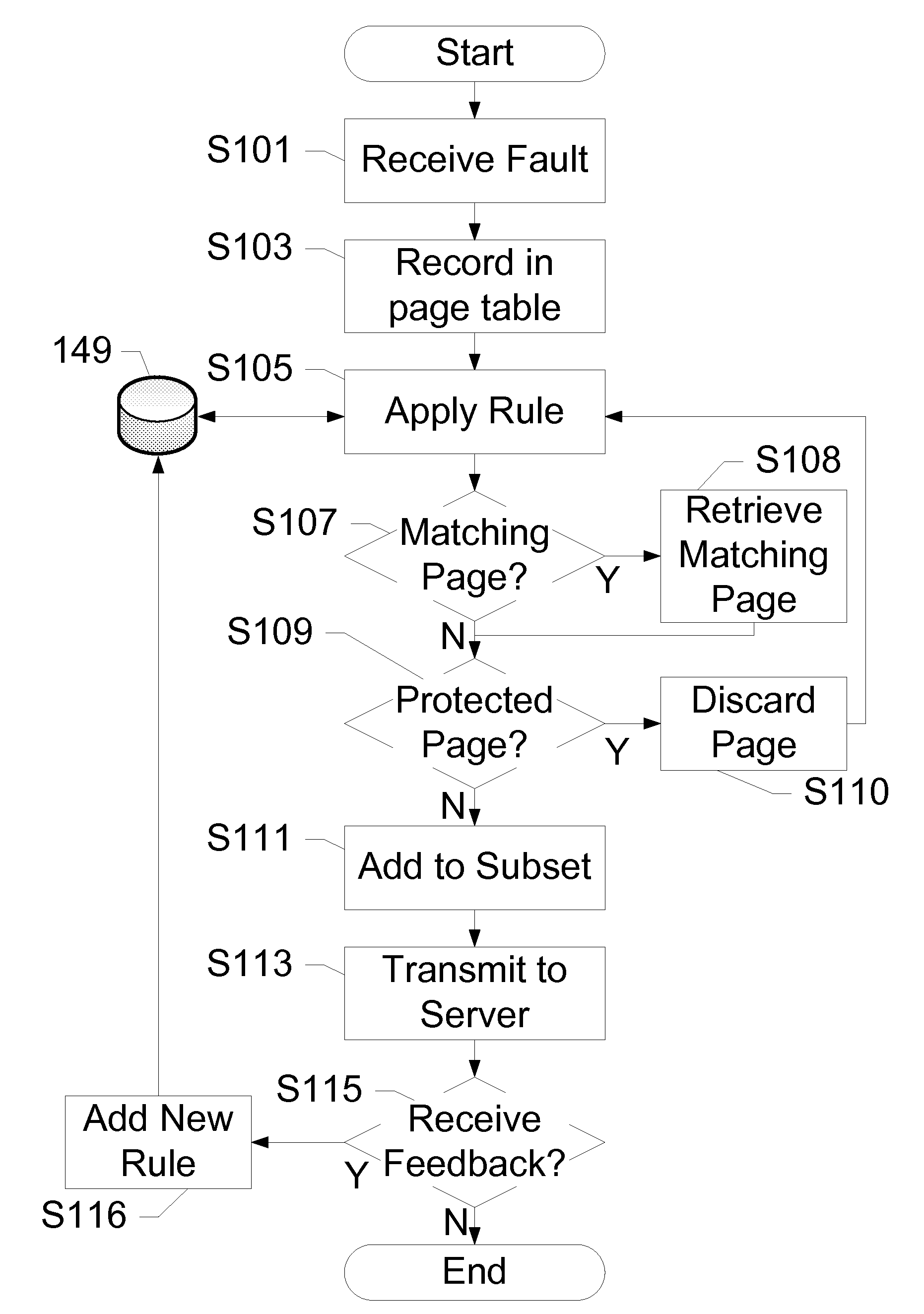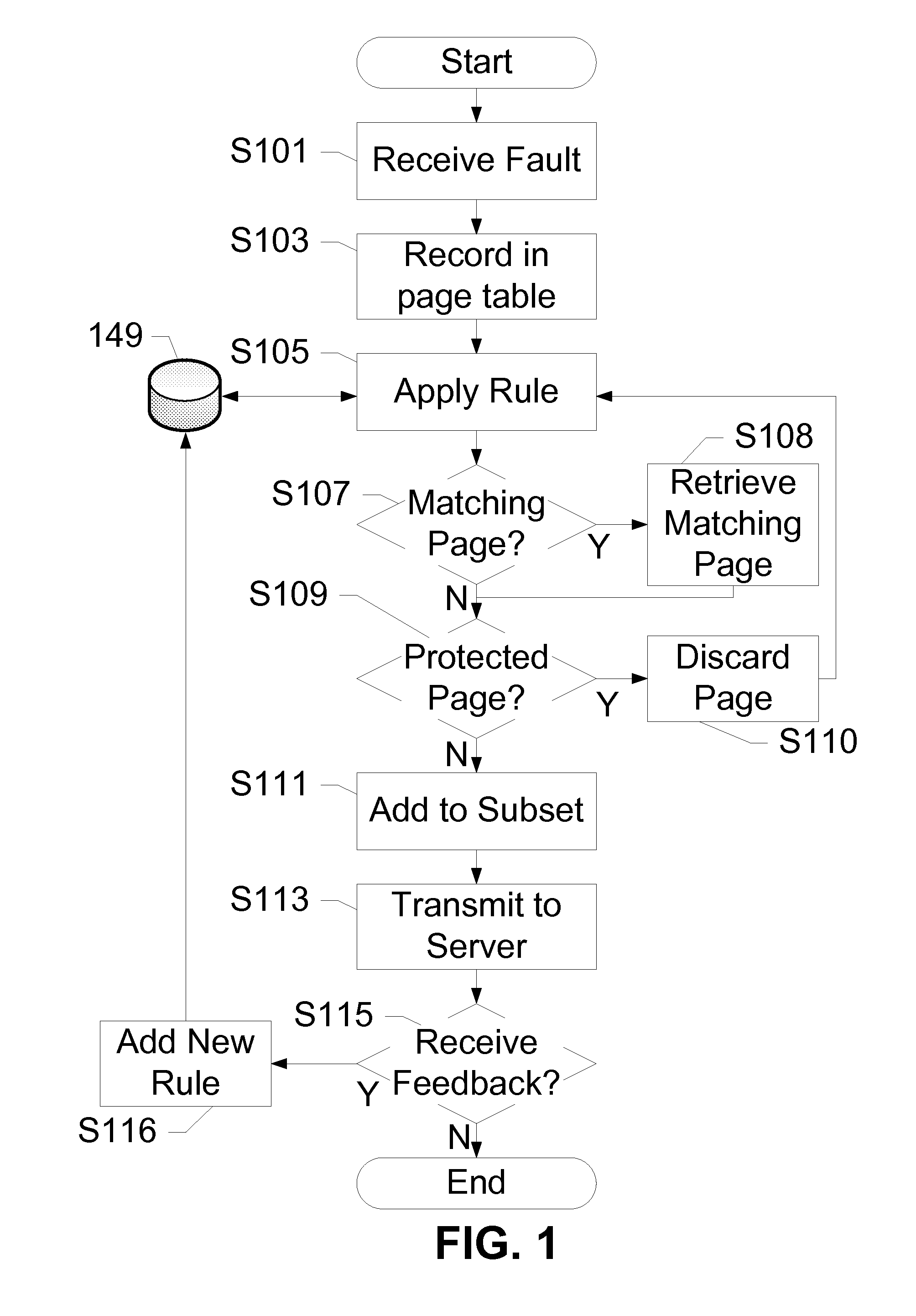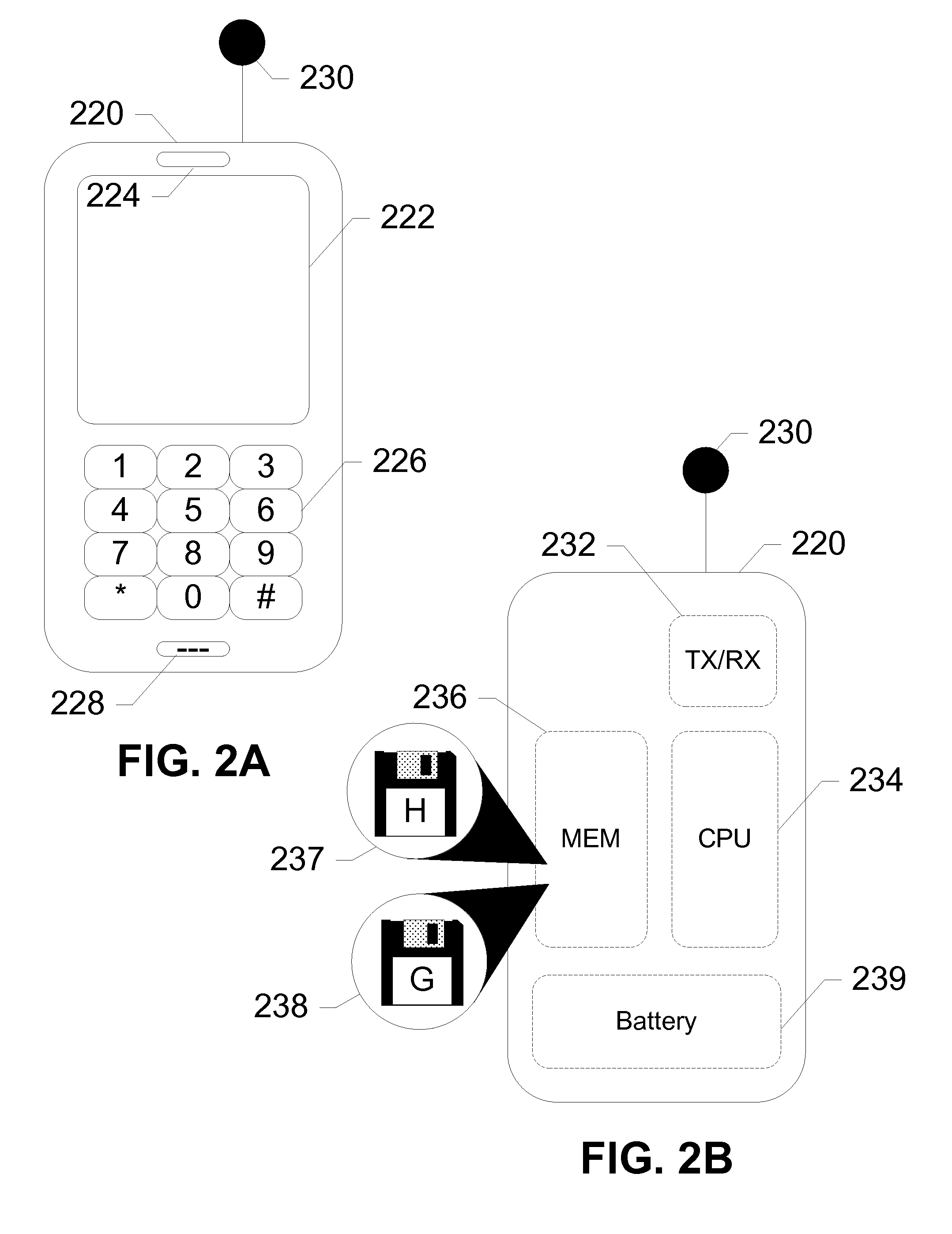Remote-Assisted Malware Detection
a malware detection and remote detection technology, applied in the direction of unauthorized memory use protection, error detection/correction, instruments, etc., can solve the problems of crippling or even completely disabling an electronic device, malicious software threat, virus and rootkit threat, etc., to reduce the processing and storage burden on the mobile device, less resources, and more reliable detection
- Summary
- Abstract
- Description
- Claims
- Application Information
AI Technical Summary
Benefits of technology
Problems solved by technology
Method used
Image
Examples
Embodiment Construction
[0020]The subject disclosure presents methods, devices, and systems for remote-assisted malware detection on a mobile device. A mobile device transmits potentially infected memory pages to a remote server across a network. The remote server performs analysis, and provides feedback to the mobile device. Based on the received feedback, the mobile device halts a process, or finds and transmits additional memory pages to the remote server for more analysis. This process is repeated until a compromised region of memory is identified and / or isolated until further repair can be performed. Remote assistance conserves scarce mobile resources and improves detection of modern threats such as viruses and malware by relocating scanning procedures to a remote server. Expending bandwidth in this way reduces mobile CPU and memory resources and saves power. Further, crowdsourcing of diverse infections from several mobile devices increases the chances of providing efficient and accurate feedback to m...
PUM
 Login to View More
Login to View More Abstract
Description
Claims
Application Information
 Login to View More
Login to View More - R&D
- Intellectual Property
- Life Sciences
- Materials
- Tech Scout
- Unparalleled Data Quality
- Higher Quality Content
- 60% Fewer Hallucinations
Browse by: Latest US Patents, China's latest patents, Technical Efficacy Thesaurus, Application Domain, Technology Topic, Popular Technical Reports.
© 2025 PatSnap. All rights reserved.Legal|Privacy policy|Modern Slavery Act Transparency Statement|Sitemap|About US| Contact US: help@patsnap.com



